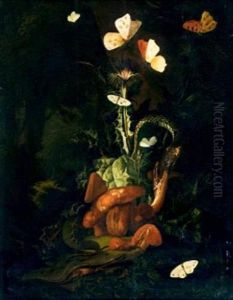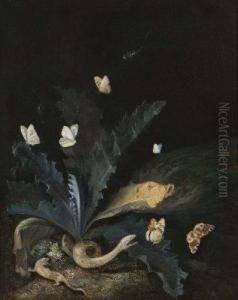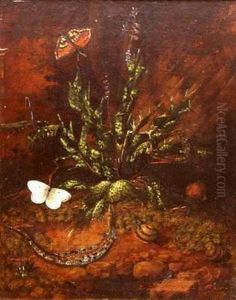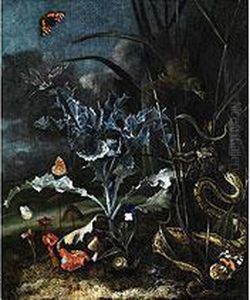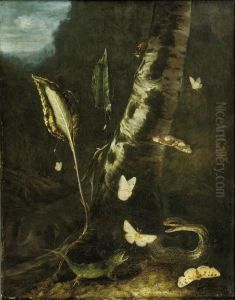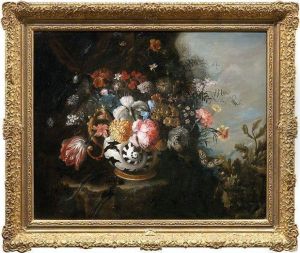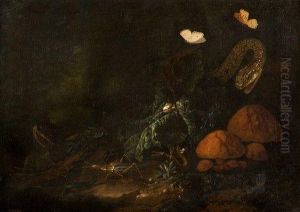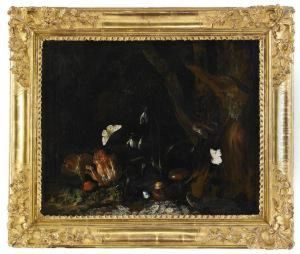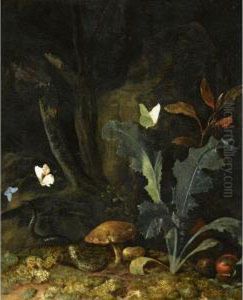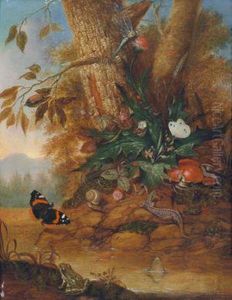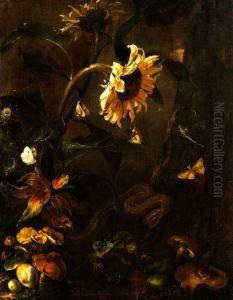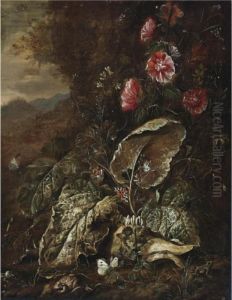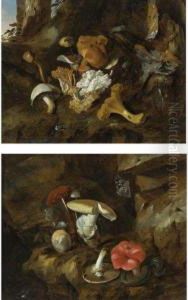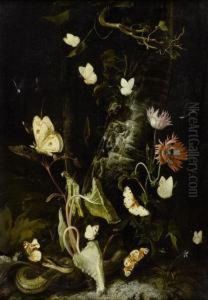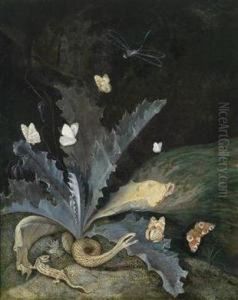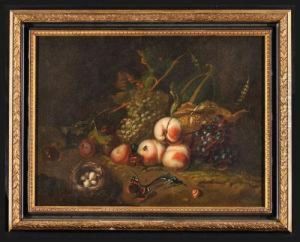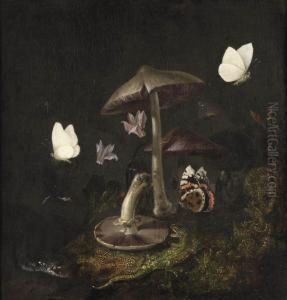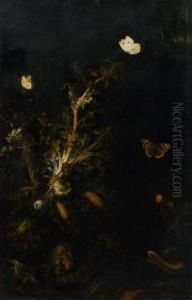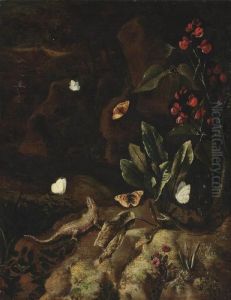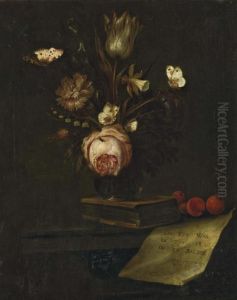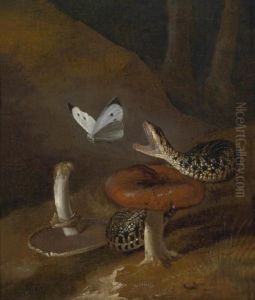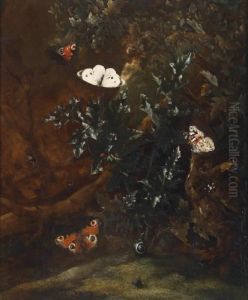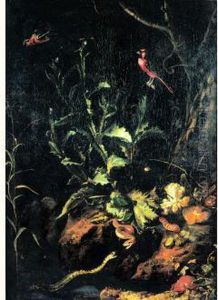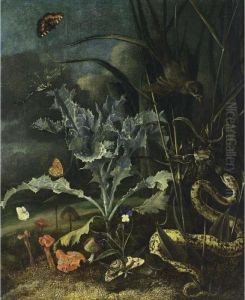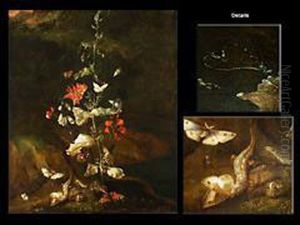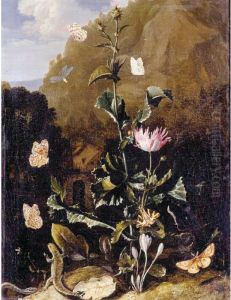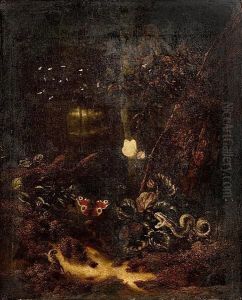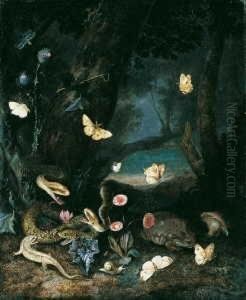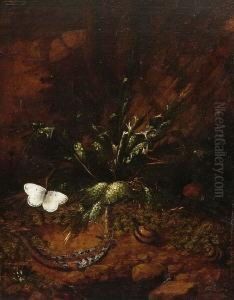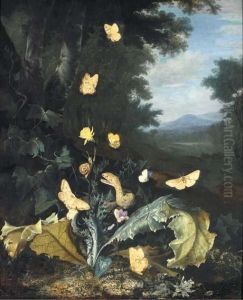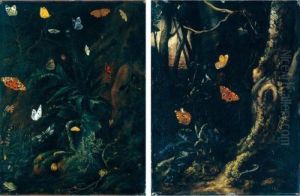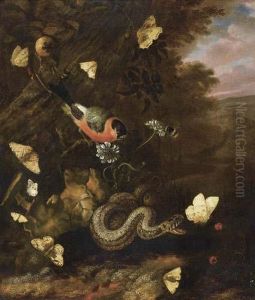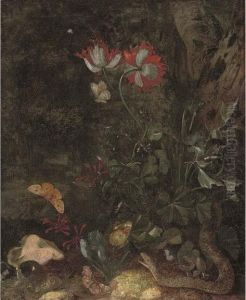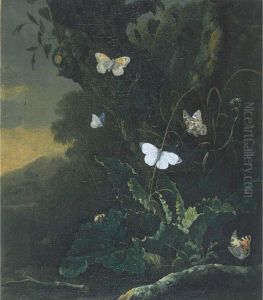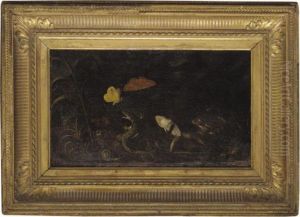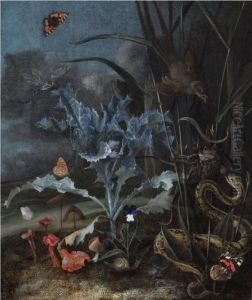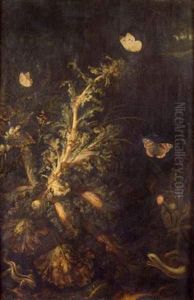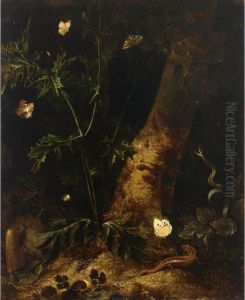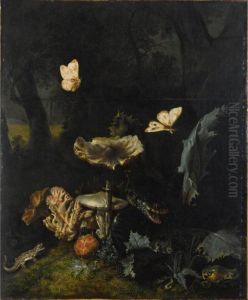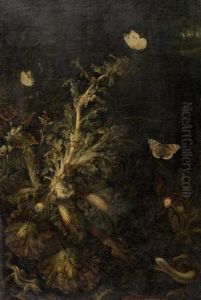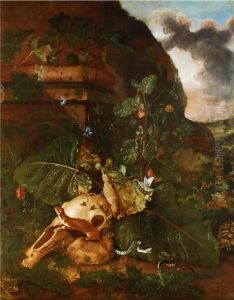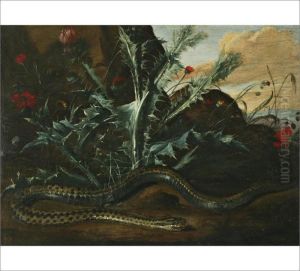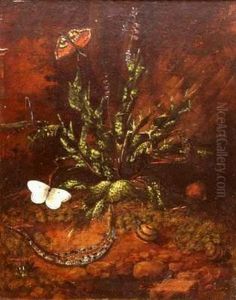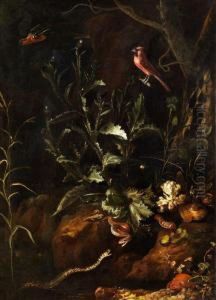Otto Marseus Snuff. Van Schrieck Paintings
Otto Marseus van Schrieck was a Dutch painter known for his contributions to a genre of still life painting that focuses on forest floor scenes, also known as 'sottobosco' or 'sous-bois'. Born in Nijmegen in the year 1619, Otto was part of the Dutch Golden Age of painting, a period in the 17th century during which Dutch art was highly acclaimed for its quality and diversity.
Van Schrieck spent the early part of his career in Rome, where he was influenced by the naturalistic works of the Bamboccianti, a group of Dutch and Flemish artists who painted scenes of everyday life. He developed a keen interest in nature and began to incorporate detailed depictions of plants, insects, and small animals into his work.
His unique approach to still life painting often involved dark, moody backdrops against which the vibrancy of life on the forest floor stood out. This was a significant departure from the more traditional tabletop still lifes that were popular at the time. Van Schrieck's paintings are characterized by a meticulous attention to detail and a fascination with the natural world, capturing everything from the texture of leaves and the delicacy of butterfly wings to the slither of snakes and the gloss of wet moss.
Van Schrieck's art was not only appreciated for its aesthetic qualities but also for its scientific interest. His accurate depictions of flora and fauna contributed to the study of natural history, as his contemporaries were still in the process of documenting and understanding the natural world.
After his time in Italy, van Schrieck returned to the Netherlands and settled in Amsterdam, where he became a member of the painter's guild. His work continued to be influential, and he inspired other artists to explore similar themes in their own work. Otto Marseus van Schrieck died in Amsterdam in 1685, leaving behind a legacy that had a lasting impact on the still life genre and naturalistic painting.
